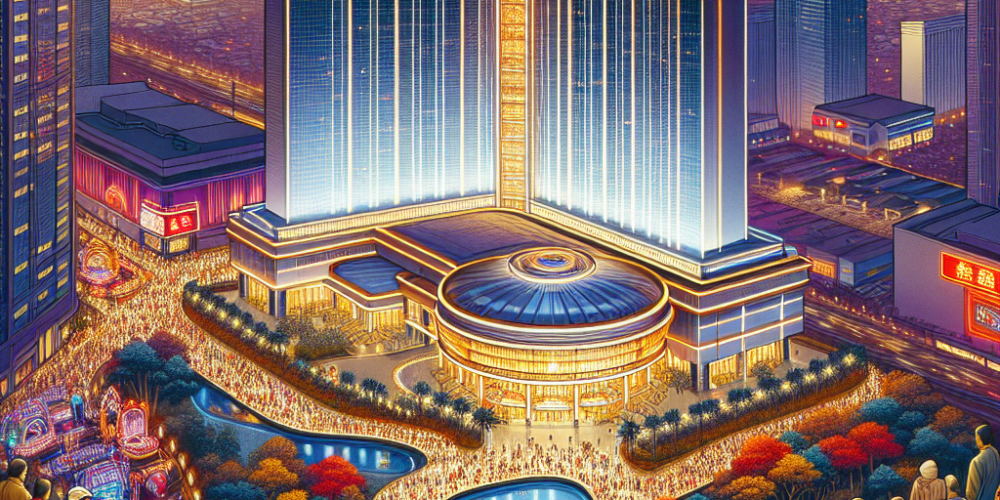The Philippines has entered a new era in its gaming and entertainment industry with the grand opening of the Manila Bay Sands Resort, a sprawling $2.5 billion casino complex situated in the heart of the capital. This monumental project, anticipated to bring substantial economic benefits, was inaugurated on Thursday in a lavish ceremony attended by prominent figures in the business and entertainment sectors, as well as government officials, including President Ferdinand Marcos Jr.
Situated along the picturesque coastline of Manila Bay, the resort is the latest addition to the city’s growing number of luxury gaming destinations. With its impressive array of facilities, which includes a 500-room hotel, multiple gourmet restaurants, a state-of-the-art conference center, and a sprawling casino floor boasting over 3,000 slot machines and 500 gaming tables, Manila Bay Sands Resort is set to become a significant player in Asia’s competitive casino tourism sector.
The development of the Manila Bay Sands Resort has been touted not only as a boost for local employment but also as a major step forward in strengthening the Philippines’ appeal as a global tourism destination. In his opening speech, President Marcos Jr. highlighted the dual economic and cultural impact of the new resort. “Not just a gaming hub, this is a beacon of progress, symbolizing our country’s resilience and ambition to attract international tourists and investors,” he stated.
Manila Bay Sands Resort is owned by Amaya Gaming Group, a leader in the global gaming and entertainment industry. The company’s CEO, David Baazov, expressed optimism about the new venture during the opening ceremony. “We are thrilled to launch Manila Bay Sands Resort, which represents our commitment to providing premium entertainment experiences while contributing to the local economy,” Baazov remarked.
The opening of Manila Bay Sands Resort comes at a time when the Philippines’ gaming industry is showing robust growth. According to the Philippine Amusement and Gaming Corporation (PAGCOR), the country’s gaming sector generated a record $3.9 billion in revenue last year, marking a significant recovery from pandemic-induced downturns. The new resort is expected to further elevate these figures by drawing both domestic and international visitors.
However, the expansion of the gaming industry in the Philippines has not been without controversy. Concerns have been raised by various societal groups about the potential increase in gambling-related problems. In response, PAGCOR has ramped up its efforts to promote responsible gaming practices and has pledged to fund programs that address gambling addiction.
Additionally, the environmental impact of large-scale constructions such as the Manila Bay Sands Resort has been a critical point of discussion. Environmentalists have cautioned about the need for sustainable practices, especially given the resort’s coastal location, which is susceptible to the effects of climate change such as rising sea levels and extreme weather events. In response, Amaya Gaming Group has assured the public of its commitment to environmental sustainability, implementing advanced waste management and energy-saving technologies at the resort.
With its strategic location, Manila Bay Sands Resort not only aims to captivate the leisure and entertainment-seeking demographic but also to position itself as a leading venue for international conventions and business expos. This move is expected to further stimulate the local economy by attracting global business travelers and event organizers.
As the Manila Bay Sands Resort opens its doors, all eyes will be on how this mega project will influence the trajectory of tourism and gaming in the Philippines. The success of this endeavor holds potential lessons for other regions looking to casino resorts as economic catalysts, balancing the benefits of boosting tourism and employment against the challenges of responsible gaming and environmental management.
This development marks a significant moment in the Philippines’ gaming and hospitality industry and is set to reshape Manila’s skyline and its economic future.



